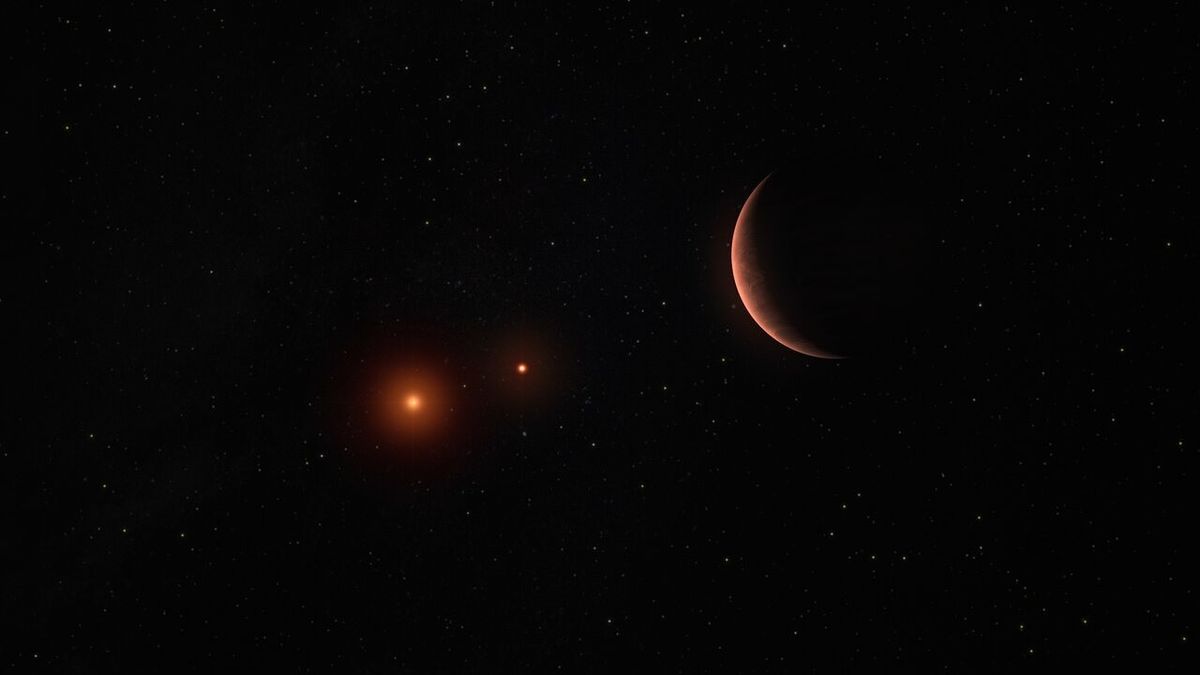Now Reading: Life on a Twin-Sun World: What an Exoplanet Reveals About Tatooine’s Reality
-
01
Life on a Twin-Sun World: What an Exoplanet Reveals About Tatooine’s Reality
Life on a Twin-Sun World: What an Exoplanet Reveals About Tatooine’s Reality

Speedy summary:
- Astronomers discovered a unique exoplanet, 2M1510(AB)b, located 118 light years away.
- the planet follows a circumbinary polar orbit around two brown dwarfs (designated A and B), which is misaligned by 90 degrees to their equatorial plane.
- Onyl 16 circumbinary planets have been identified so far, but this is the first on a polar orbit.
- Brown dwarfs are “failed stars” that don’t sustain hydrogen-based fusion, rendering them cooler than traditional stars.
- The discovery was made through subtle gravitational effects observed using the Very Large Telescope in Chile, as part of research led by astronomers from the University of Birmingham in the UK.
- Several unknowns remain about this planet, including its precise mass and distance from its parent brown dwarfs. Estimates suggest it has a mass between 10 to 100 times that of Earth.
- Circumbinary planets experience unique seasonal and diurnal patterns due to their binary systems’ dynamics; however,life on such worlds may be unlikely given insufficient warmth from brown dwarfs.
- A third brown dwarf exists farther out within the same planetary system but doesn’t influence this discovery.
Image References:
- Planet visualized with two distant suns: Image link.
- System diagram with stellar alignments shown: Image link.
- Schematic orbital view demonstrating polar misalignment: Image link.
Indian Opinion Analysis:
The discovery of exoplanet 2M1510(AB)b is scientifically meaningful as it adds complexity to our understanding of planetary formation and orbital mechanics beyond single-star systems like our Sun’s Solar System. While polar orbits around single stars were previously observed for various celestial bodies (e.g., disks), finding one around a binary pair challenges existing theories about disk alignment during formation processes.
This research underscores India’s growing interest in space exploration collaborations with global institutions possessing advanced observational technologies like ALMA or Very Large Telescope-assets not yet available domestically at full capability scale.
Such developments highlight indirect implications for India’s burgeoning space program led by ISRO: building capabilities for high-resolution astronomy infrastructure while fostering international exchange agreements could expedite India’s entry into exoplanetary studies more definitively contributing next-to similar-themed data profiles against Indian Sky-grids).
The distinct climatic characteristics associated between “Habitability Zones vs Off several hydrological-layered diversity remains frameworks unresolved remains intriguing developmental path future comparative analysis analyst remarks reiterate scope-definitive benefits also possibly uniform nation-specific allocations indent”
























